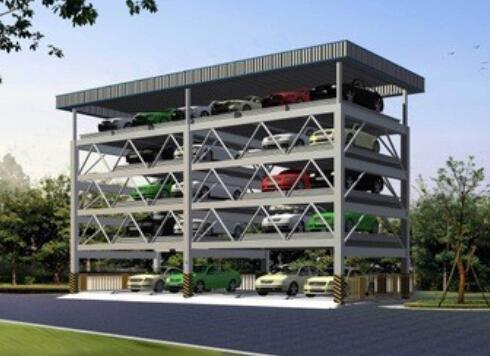The tension of urban land space in Chinese cities is directly related to the development history of transportation, especially as the number of private car owners continues to rise. However, the design of urban basic space is still a product of outdated concepts from decades ago, which has led to the evident relationship between vehicle parking and urban space tension. Below is a brief introduction of the basic features of mechanical parking spaces, hoping to provide assistance to Chinese car owners.

I. Intelligent control of parking space distance
To ensure the safety and stability of intelligent lifting garages, finite element software is used to simulate and analyze intelligent lifting garages. Beam elements are used to simulate the beam frame and slide rails, shell elements are used to simulate parking spaces, and spring elements are used to analyze the relationship between slide rails and parking spaces. Based on the actual situation of intelligent parking spaces, accurate analysis is conducted using beam elements, shell elements, and spring elements that conform to reality.
II. Humanized design principles
In terms of functional systems, mechanical parking spaces adaptively expand the functional system of self-service parking buildings through "adaptive compound of functional systems" and "applicable transformation of parking functions" to meet the complex and varied needs of cities and users. In terms of internal space, adaptability is created in the internal space of self-service parking buildings through "humanized interface and details" and "infiltration and integration of natural environment" to meet the psychological and physiological needs of users during the usage process.
III. Promoting harmonious community governance
Due to the limitations of planning, the demand for parking spaces in old communities is more urgent, but the renovation projects face various contradictions. The construction of urban parking lots, which has attracted social attention, is steadily progressing, but its shortcomings still exist, and urban parking continues to be troubled by difficulty in finding a parking space. The use of mechanical parking equipment can effectively solve these contradictions and create a more harmonious and stable community governance environment.
The main purpose of the installation and promotion of mechanical parking spaces is to find a relatively effective solution strategy for cities facing tight urban land resources. It is believed that as people's upgrading and optimization of concepts of urban land space planning and utilization continue, more positive and meaningful ways will be developed to promote the more positive evolution of urban space planning.

